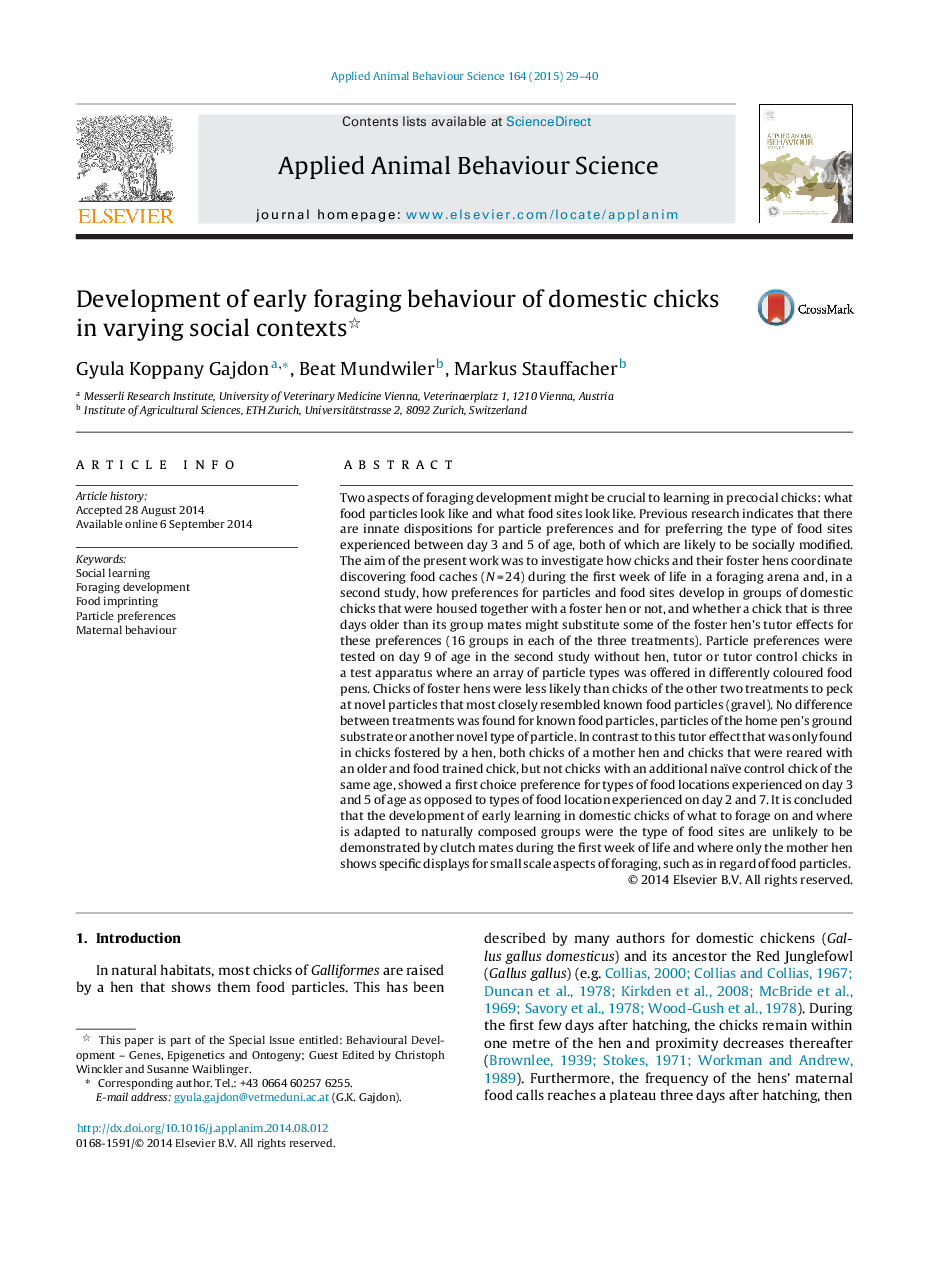| کد مقاله | کد نشریه | سال انتشار | مقاله انگلیسی | نسخه تمام متن |
|---|---|---|---|---|
| 4522450 | 1625342 | 2015 | 12 صفحه PDF | دانلود رایگان |

• Foster hens discover most food caches, their chicks only a few, during the first week of life.
• First choice preferences for food sites match between hen and chick tutored group members.
• First choice preferences for food sites differ between tutored and untutored chicks.
• Only the chicks of foster hens pecked significantly less often gravel.
• In conclusion foraging development seems to be adapted to natural group composition.
Two aspects of foraging development might be crucial to learning in precocial chicks: what food particles look like and what food sites look like. Previous research indicates that there are innate dispositions for particle preferences and for preferring the type of food sites experienced between day 3 and 5 of age, both of which are likely to be socially modified. The aim of the present work was to investigate how chicks and their foster hens coordinate discovering food caches (N = 24) during the first week of life in a foraging arena and, in a second study, how preferences for particles and food sites develop in groups of domestic chicks that were housed together with a foster hen or not, and whether a chick that is three days older than its group mates might substitute some of the foster hen's tutor effects for these preferences (16 groups in each of the three treatments). Particle preferences were tested on day 9 of age in the second study without hen, tutor or tutor control chicks in a test apparatus where an array of particle types was offered in differently coloured food pens. Chicks of foster hens were less likely than chicks of the other two treatments to peck at novel particles that most closely resembled known food particles (gravel). No difference between treatments was found for known food particles, particles of the home pen's ground substrate or another novel type of particle. In contrast to this tutor effect that was only found in chicks fostered by a hen, both chicks of a mother hen and chicks that were reared with an older and food trained chick, but not chicks with an additional naïve control chick of the same age, showed a first choice preference for types of food locations experienced on day 3 and 5 of age as opposed to types of food location experienced on day 2 and 7. It is concluded that the development of early learning in domestic chicks of what to forage on and where is adapted to naturally composed groups were the type of food sites are unlikely to be demonstrated by clutch mates during the first week of life and where only the mother hen shows specific displays for small scale aspects of foraging, such as in regard of food particles.
Journal: Applied Animal Behaviour Science - Volume 164, March 2015, Pages 29–40